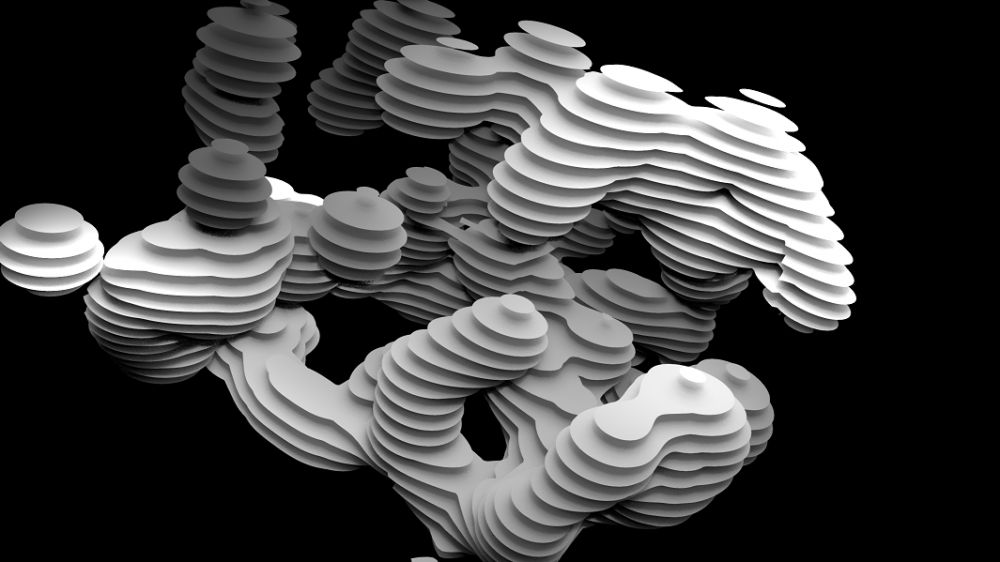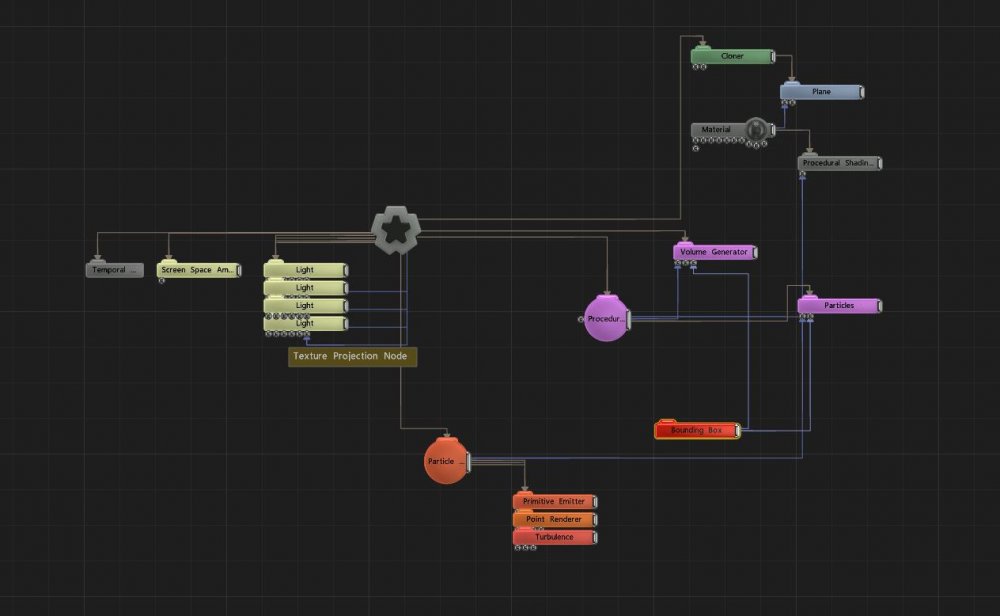Procedural Shading Node
Uses a procedural system to shade a material.



Uses a Procedural System as a shading value source. The effect of this shading node is the distance to the surface of the connected procedural.
The output of this node can be connected to other shading nodes, to build up a more complex shading system.
These properties control the core behaviours of the node.
| Parameter | Details |
|---|---|
| Mapping Type | What kind of mapping is to be applied.
|
| Output Channel | Which channel will be affected by the fractal noise.
|
| Shader Pass | How the final modified shading is applied to the shape.
|
| Blend Amount | The amount the generator is blended with the output. |
| Name | Description | Typical Input |
|---|---|---|
| Procedural Root | The root node of the procedural network to calculate a distance from. | Procedural Root |
| Transform Modifiers | Apply the transforms of another node to this node. | Null |
| Target Node | Modifiy the rotations of the node to always direct the z axis towards the input. | Null |
| Local Transform Override | Apply the transforms of another node to this node, relative to its parent. | Null |